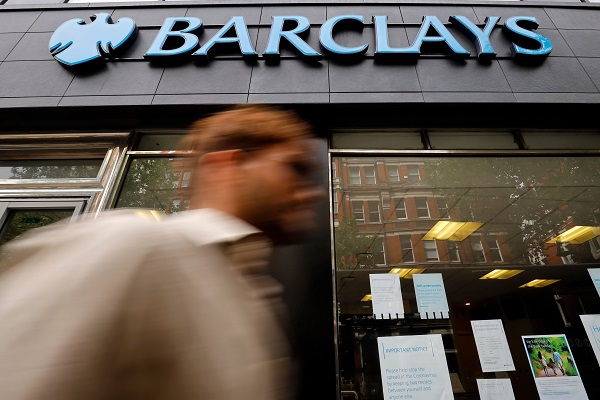Barclays manages profits beat despite mega fine
28th April 2022 08:05
by Richard Hunter from interactive investor
A post-pandemic recovery has come unstuck and Barclays shares are stuck near a one-year low. Our head of markets analyses first-quarter results from the high street lender.

On the whole, Barclays (LSE:BARC) has had a strong start to the year, although the fine relating to over-issuance of securities in the US has punched something of a hole in profits.
The £500 million impairment for these litigation and conduct charges has also worsened the CET1 and cost income ratios and has delayed the start of the share buyback programme to the second quarter, once discussions with the US regulator have been completed.
The spectre of litigation which tarnishes the sector as a whole has clearly not yet been resolved, and Barclays’ share price has suffered as a result of this latest error.
- 60 reasons to sell your UK shares
- UK bank bargains beckon as rate rises set to boost results
- Lloyds Bank beats expectations in Q1 and issues upgrade
More positively, the bank is comfortable with its overall credit loss provisions, despite the headwinds of rising inflation and general consumer affordability issues. While the provision has risen to £141 million versus £55 million the previous year, these numbers are minimal compared to the swings already seen in the updates from HSBC Holdings (LSE:HSBA) and Lloyds Banking Group (LSE:LLOY).
Elsewhere, the key metrics are for the most part moving in the right direction. The rising interest rate has provided tailwinds for the sector as a whole and Barclays is no exception. With Net Interest Income having risen by 26% and with another improvement to the Net Interest Margin to 2.62% from 2.54%, the picture at the headline level is that total group income rose by 10% to £6.5 billion.
First-quarter pre-tax profit was affected by the litigation charge and fell from £2.4 billion to £2.2 billion in the period. This is nonetheless comfortably ahead of expectations of a number of £1.3 billion, with notably positive contributions from the Corporate and Investment Banking division amid market volatility, and with further strong growth in mortgage lending in the UK.
Personal Banking income rose by 11% in the UK unit, even though this was slightly tempered by the Barclaycard unit, where consumers understandably continue to increase repayments and reduce borrowings in light of the general squeeze on individual incomes.
The cost:income ratio increased partly as a result of the US litigation to 63% from 61%, although within sight of the bank’s target of less than 60%, while the capital cushion fell to 13.8% from 15.1% in the previous quarter for similar reasons, although still within the group’s aim of between 13%/14%. Meanwhile, the Return on Tangible Equity figure slipped to 11.5% from 14.7%, although remaining comfortably above the target of more than 10%.
Overall, the strong performance was underpinned by the diversity of the Barclays model both by business lines and geography, setting its appeal aside from some of its UK peers. At the same time, the bank also continues its drive towards digital efficiency and producing sustainable growth in the CIB division. In the meantime, an attractive dividend yield of 4.2% is generous given the general interest rate backdrop and provide some comfort to investors, despite any disappointment resulting from the delayed buyback programme.
- Where to invest in Q2 2022? Four experts have their say
- How to find ‘cockroach’ shares that can survive disasters
- HSBC fails to excite with these first quarter results
The share price has failed to reflect Barclays’ potential and has also partly suffered due to the US situation. The shares have struggled for some time, and in the last year alone have fallen by 24%, which compares to a gain of almost 7% in that period for the wider FTSE100.
Even so, supporters of the stock remain undeterred, with the general market consensus remaining at a "buy", although perhaps with slightly less conviction that some of the other opportunities to be found elsewhere in the sector.
These articles are provided for information purposes only. Occasionally, an opinion about whether to buy or sell a specific investment may be provided by third parties. The content is not intended to be a personal recommendation to buy or sell any financial instrument or product, or to adopt any investment strategy as it is not provided based on an assessment of your investing knowledge and experience, your financial situation or your investment objectives. The value of your investments, and the income derived from them, may go down as well as up. You may not get back all the money that you invest. The investments referred to in this article may not be suitable for all investors, and if in doubt, an investor should seek advice from a qualified investment adviser.
Full performance can be found on the company or index summary page on the interactive investor website. Simply click on the company's or index name highlighted in the article.